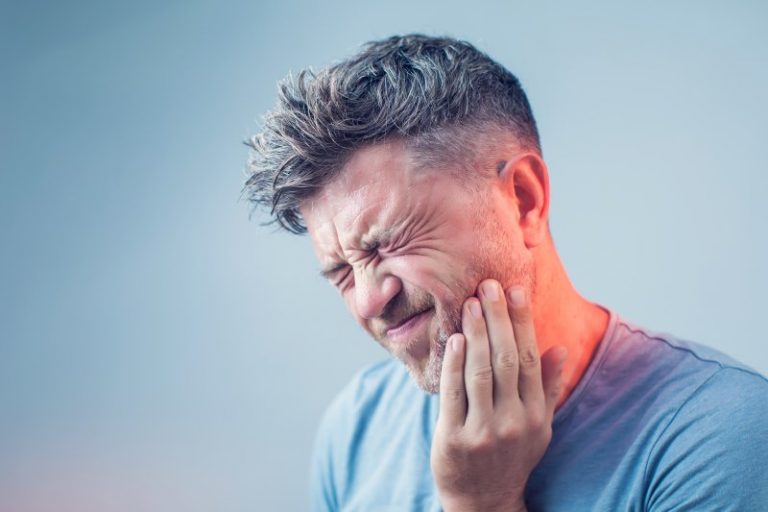What are the symptoms of pulpitis?
Pulpitis is inflammation of the dental pulp, the soft tissue inside a tooth that contains nerves and blood vessels. Symptoms of pulpitis can vary depending on the severity of the inflammation. Common symptoms include:
- Toothache: Persistent or intermittent pain in the affected tooth, which can range from mild to severe. The pain may be sharp, throbbing, or aching.
- Sensitivity to Temperature: Increased sensitivity to hot or cold foods and beverages. The pain may linger even after the stimulus is removed.
- Pain with Pressure: Discomfort or pain when chewing or applying pressure to the affected tooth.
- Spontaneous Pain: Pain that occurs without an apparent cause and may happen suddenly.
- Swelling: Swelling of the gum tissues around the affected tooth, which may also extend to the face or jaw.
- Discoloration: The affected tooth may become darker or discolored compared to adjacent teeth.
- Gum Tenderness: Tenderness or discomfort in the gums near the affected tooth.
- Foul Odor: An unpleasant taste or smell in the mouth due to infection in the pulp tissue.
- Pus Formation: An abscess or pus formation at the root of the tooth, which can cause additional swelling and discomfort.
Symptoms of pulpitis can be either reversible or irreversible, depending on the extent of the pulp damage:
- Reversible Pulpitis: The inflammation is mild and can be treated by addressing the cause of irritation. Symptoms typically resolve once the underlying issue is treated.
- Irreversible Pulpitis: The inflammation is severe and the pulp is unable to recover. This often requires more intensive treatment, such as a root canal, to remove the damaged pulp and save the tooth.
If you experience symptoms of pulpitis, it is important to consult a dentist for an accurate diagnosis and appropriate treatment.
What are the causes of pulpitis?
Pulpitis, or inflammation of the dental pulp, can be caused by several factors. These include:
1. Dental Caries (Cavities)
- Advanced Decay: Deep cavities that extend into the pulp chamber can lead to pulpitis by allowing bacteria to infect the pulp tissue.
2. Tooth Trauma
- Physical Injury: A blow or injury to the tooth, such as from an accident or sports activity, can damage the pulp and lead to inflammation.
3. Repeated Dental Procedures
- Over-Treatment: Multiple or extensive dental procedures on the same tooth, such as fillings or crowns, can irritate the pulp tissue.
4. Tooth Fractures
- Cracks or Fractures: Cracks or fractures in the tooth can expose the pulp to bacteria and irritants, causing inflammation.
5. Acid Erosion
- Acidic Foods and Beverages: Frequent consumption of acidic foods or drinks can erode tooth enamel and contribute to pulpitis by increasing the risk of decay and pulp exposure.
6. Gingival or Periodontal Disease
- Infection Spread: Severe gum disease or infections in the surrounding tissues can spread to the pulp and cause inflammation.
7. Poor Dental Hygiene
- Inadequate Care: Poor oral hygiene practices can lead to plaque buildup, decay, and eventual pulpitis.
8. Thermal Injury
- Heat Damage: Excessive heat from dental procedures or other sources can potentially damage the pulp tissue.
9. Chemical Injury
- Irritant Exposure: Exposure to certain chemicals or substances used in dental procedures may irritate the pulp.
10. Developmental Abnormalities
- Tooth Structure Issues: Abnormalities in tooth development or structure can predispose a tooth to pulpitis.
Early diagnosis and treatment are crucial to prevent the progression of pulpitis and to avoid more severe dental issues. If you experience symptoms of pulpitis, such as toothache or sensitivity, consulting a dentist promptly is important for effective management.
What is the treatment for pulpitis?
The treatment for pulpitis depends on the severity of the condition and whether the pulpitis is reversible or irreversible. Here are the common treatment approaches:
1. Reversible Pulpitis
- Restoration of the Tooth: The primary treatment is to address the cause of the inflammation. This often involves:
- Removing Decay: Cleaning out cavities and applying a filling to seal the tooth and prevent further irritation.
- Avoiding Irritants: Adopting good oral hygiene practices and avoiding foods or substances that can exacerbate sensitivity.
2. Irreversible Pulpitis
- Root Canal Therapy: For severe or irreversible pulpitis, where the pulp cannot recover, root canal therapy is typically required:
- Procedure: The dentist or endodontist removes the infected or inflamed pulp tissue from the pulp chamber and root canals. The canals are then cleaned, disinfected, and filled with a biocompatible material called gutta-percha.
- Restoration: After the root canal, the tooth is usually restored with a crown or filling to protect it and restore its function.
3. Tooth Extraction
- When Necessary: If the tooth is severely damaged or root canal therapy is not feasible or successful, extraction of the affected tooth may be required. Following extraction, options for tooth replacement include dental implants, bridges, or dentures.
4. Pain Management
- Symptom Relief: Over-the-counter or prescribed pain medications may be used to manage discomfort and pain associated with pulpitis and its treatment.
5. Antibiotics
- Infection Control: If there is an active infection associated with pulpitis, antibiotics may be prescribed to help control and eliminate the infection before or alongside other treatments.
6. Follow-Up Care
- Monitoring and Maintenance: Regular follow-up visits with the dentist are important to ensure that the tooth heals properly and to monitor for any potential complications.
Timely intervention is crucial to effectively manage pulpitis and prevent complications. If you experience symptoms such as toothache or sensitivity, consulting a dentist as soon as possible is important for proper diagnosis and treatment.

Leave a Reply
You must be logged in to post a comment.